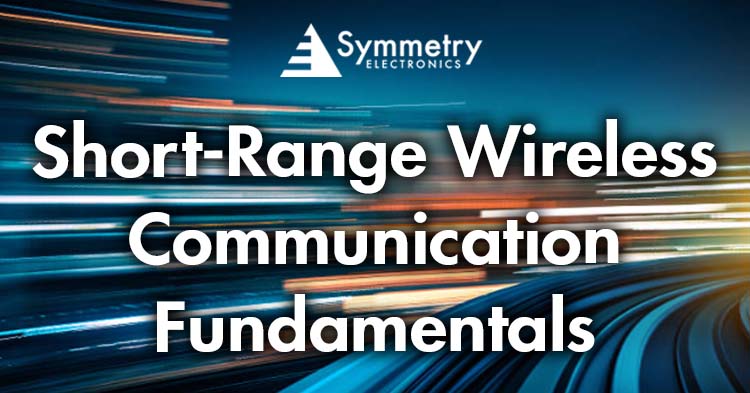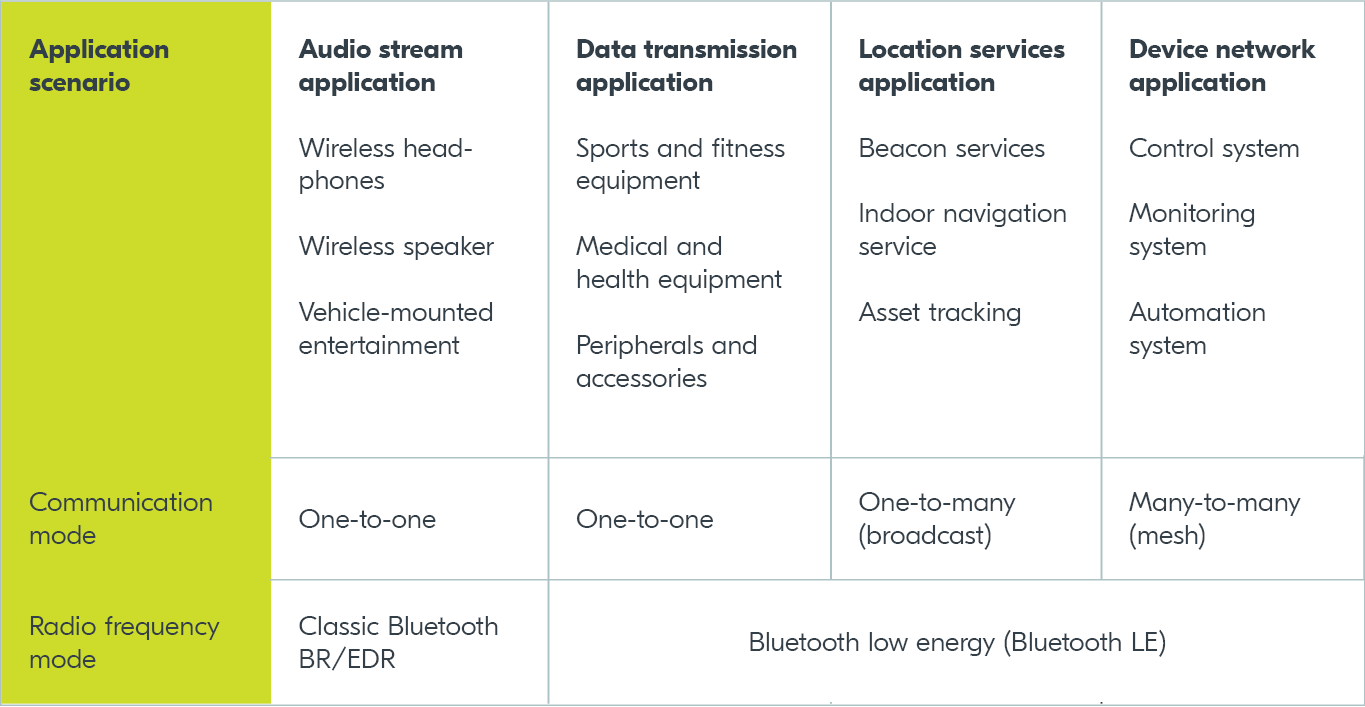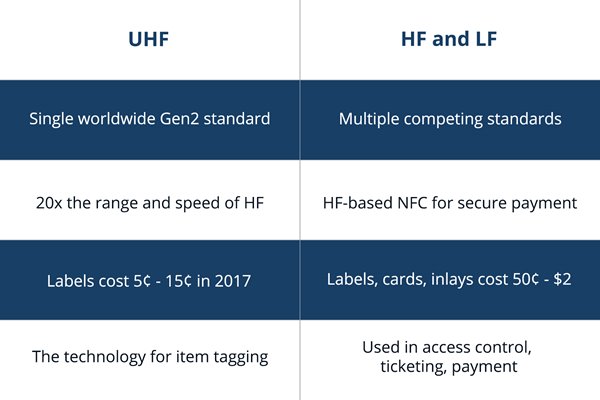- Home
- Symmetry Blog
- Mastering Short-Range Wireless Communication
Mastering Short-Range Wireless Communication
About Jari Haiston

When it comes to electronics, understanding range is key. It defines how far two antennas in a wireless network can communicate. Short-range wireless tech has transformed industries like industrial equipment, household appliances, and healthcare. Selecting the right protocol for your device depends on its use case. Here are factors to consider:
- Frequency & Impedance: What's your device's antenna frequency and impedance?
- Physical Obstacles: Are there barriers like walls or appliances affecting communication?
- Noise Level: Will noise interfere with wireless communication?
Bluetooth® Low Energy (LE)
Based on the 802.15.1 IEEE standard, Bluetooth® is a widely adopted wireless sensor technology that is used in transceivers, basebands, protocol stacks, and more. According to Bluetooth’s annual market update, “By 2025, annual Bluetooth enabled device shipments will exceed six billion.” Bluetooth’s popularity makes it a widely accessible choice as a wireless communications protocol. While there are many variants of Bluetooth technology, Bluetooth LE is an effective short-range communications method because it is optimized for power, cost, and size-constrained projects.
In comparison to other Bluetooth variants (Figure 1), Bluetooth LE is ideal for power-efficient applications and use cases in wearables, smart IoT devices, and battery-powered accessories.
Bluetooth LE Key Features:
- Ultra-low power consumption
- Cost-effective
- Compatible with Android, iOS, and more
- Enhanced transmission range and receiver sensitivity
- Runs for years on coin-cell batteries
Figure 1: Bluetooth Comparison
Source: Nordic Semiconductor
Ultra Wideband (UWB)
Ultra-wideband (UWB) is a high-performance communications protocol that’s an optimal solution for interference-free short-range wireless transmissions. It’s low-power and cost-efficient. UWB has a high bandwidth for precise tracking, data collection, and communication.
UWB Key Features:
- Low power (0.5 mW / -41.3 dBm/MHz)
- 10-30 cm precision location accuracy
- High security
- Multipath and interference protection
802.15.4 Based Zigbee, Z-Wave, and Thread Wireless Protocols
Based on IEEE 802.15.4, Thread, Zigbee, and Z-Wave technologies empower smart homes with low power consumption and data rates. Managed by the Z-Wave Alliance, Z-Wave separates itself from Thread and Zigbee by operating on unlicensed frequency bands to avoid interference.
Zigbee Key Features:
- Low latency
- 35 ft. range
- Supports up to 65,000 nodes
- Durable battery life
- Supports mesh or star topology
- Supports multiple network topologies
Z-Wave Key Features:
- 100 ft. range
- Connects up to 232 connections
- 9.6-100 kbps data rate
- Operates at 908/916 Mhz
Thread Key Features:
- 100 ft. range
- Generally supports mesh topology, but can also support star topology
- Up to 300 connections
- 250 kbps data rate
- Operates at 2.4 GHz
Radio Frequency Identification (RFID)
Based on Automatic Identification and Data Capture (AIDC), Radio Frequency Identification (RFID) is a game-changer in asset tracking solutions. It identifies and collects data about objects without line of sight. RFID tags come in three ranges (Figure 2): LF, HF, and UHF, each suited for different applications.
- Low Frequency (LF RFID) supports frequencies from 30 KHz to 300 KHz and provides a tracking range of 10cm. LF RFID applications include livestock tracking and access control.
- High Frequency (HF RFID) supports frequencies from 3 to 20 MHz and provides a tracking range of 10cm to 1m. HF RFID applications include transfers, ticketing, and payment tracking.
- Ultra-High Frequency (UHF RFID) supports frequencies of 300 MHz to 3 GHz and provides a tracking range of up to 12m. UHF RFID applications include inventory tracking, wireless communications, and methods surrounding pharmaceutical anti-counterfeiting.
Figure 2: LF, HF, and UHF RFID comparison
Source: Impinj.com
Wi-Fi Location Tracking
Wi-Fi, based on 802.11 IEEE standards, is familiar for internet access and local device connections. Wi-Fi location tracking uses techniques like TDOA measurements and operates on existing Wi-Fi infrastructure with a 3-5m tracking range.
Which Short-Range Protocol is Optimal for Your Device Design?
In the vast landscape of short-range wireless communication, finding the perfect fit for your device is crucial. Whether it's the power efficiency of Bluetooth LE, the precision of UWB, the versatility of Zigbee, Z-Wave, and Thread, the tracking capabilities of RFID, or the familiarity of Wi-Fi, the right choice can make all the difference.
Navigating these options can be challenging, but you don't have to do it alone. Our knowledgeable team of Applications Engineers are experts in IoT, Industrial IoT (IIoT), and wireless technologies and can help you decide which wireless protocol aligns best with your device's unique requirements. Consultation is free and available throughout your design cycle. For more information, contact Symmetry Electronics!
Resources
- Long Range vs. Short Range Wireless Communications: What’s Best for Your Project?
- Things You Should Know About Bluetooth Range
- Technology of short-distance wireless communication and its application based on equipment support
- Zigbee, Z-Wave, Thread, and WeMo: What’s the Difference?
- Wireless Connectivity Options for IoT Applications – Technology Comparison


